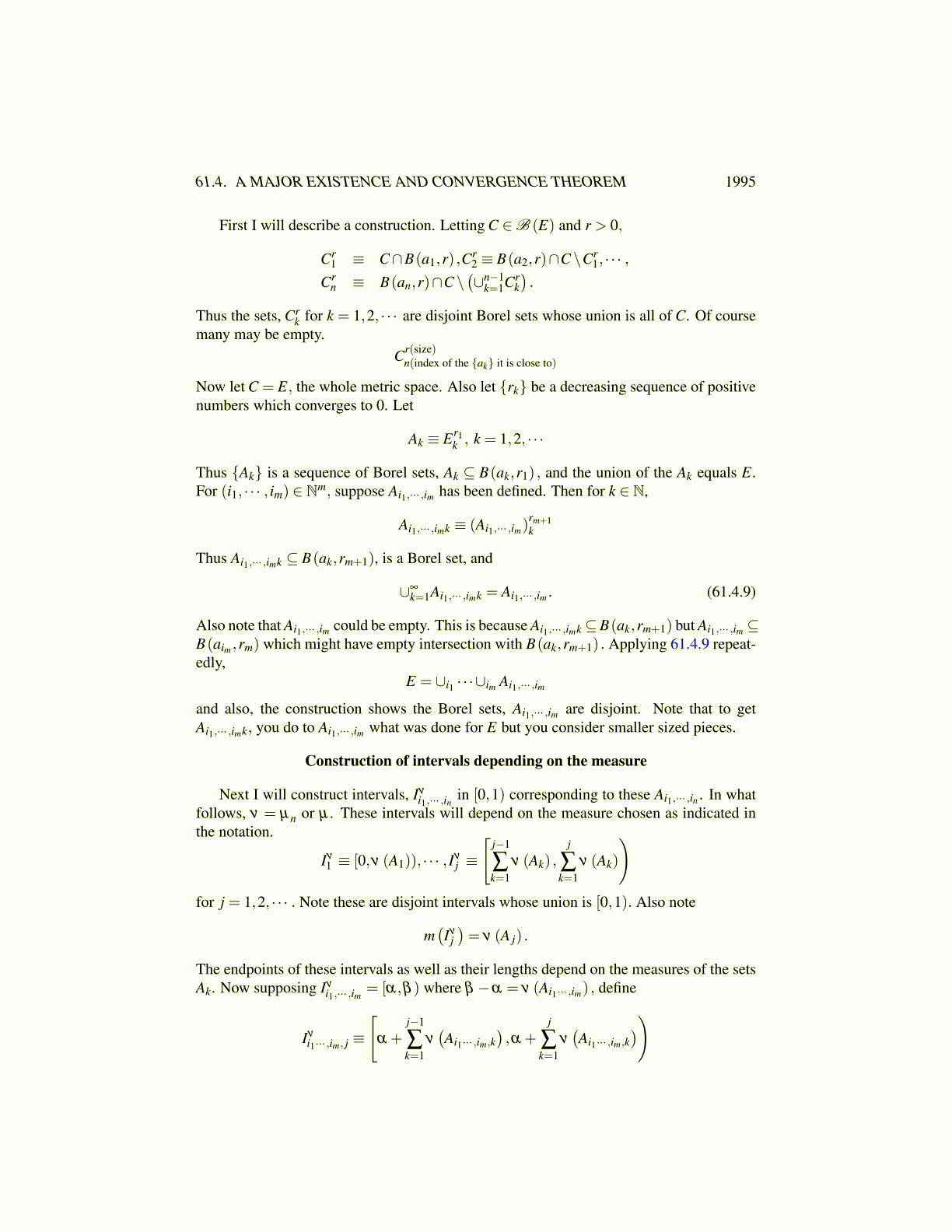
61.4. A MAJOR EXISTENCE AND CONVERGENCE THEOREM 1995
from 61.3.7,
λ(KC
n)
= limp→∞
λ p(KC
n ∩Kp)
≤ lim supp→∞
(λ p (Kp)−λ p (Kn))
≤ lim supp→∞
(λ p (Kp)−λ n (Kn))
≤ lim supp→∞
(1−(
1− 1n
))=
1n
Suppose ||φ ||∞< M. Then∣∣∣∣∫ φdµk−
∫φdλ
∣∣∣∣≤ ∣∣∣∣∫KCn
φdµk +∫
Kn
φdµk−(∫
Kn
φdλ +∫
KCn
φdλ
)∣∣∣∣≤∣∣∣∣∫Kn
φdµk−∫
Kn
φdλ n
∣∣∣∣+ ∣∣∣∣∫KCn
φdµk−∫
KCn
φdλ
∣∣∣∣≤
∣∣∣∣∫Kn
φdµk−∫
Kn
φdλ n
∣∣∣∣+ ∣∣∣∣∫KCn
φdµk
∣∣∣∣+ ∣∣∣∣∫KCn
φdλ
∣∣∣∣≤
∣∣∣∣∫Kn
φdµk−∫
Kn
φdλ n
∣∣∣∣+ Mn+
Mn
First let n be so large that 2M/n < ε/2 and then pick k large enough that the above expres-sion is less than ε.
Definition 61.3.6 Let E be a complete separable metric space and let µ and the sequenceof probability measures, {µn} defined on B (E) satisfy
limn→∞
∫φdµn =
∫φdµ.
for every φ a bounded continuous function. Then µn is said to converge weakly to µ .
61.4 A Major Existence And Convergence TheoremHere is an interesting lemma about weak convergence.
Lemma 61.4.1 Let µn converge weakly to µ and let U be an open set with µ (∂U) = 0.Then
limn→∞
µn (U) = µ (U) .
Proof: Let {ψk} be a sequence of bounded continuous functions which decrease toXU . Also let {φ k} be a sequence of bounded continuous functions which increase to XU .For example, you could let
ψk (x) ≡ (1− k dist(x,U))+ ,
φ k (x) ≡ 1−(1− k dist
(x,UC))+ .